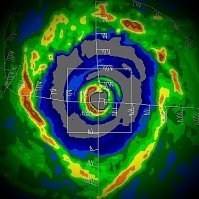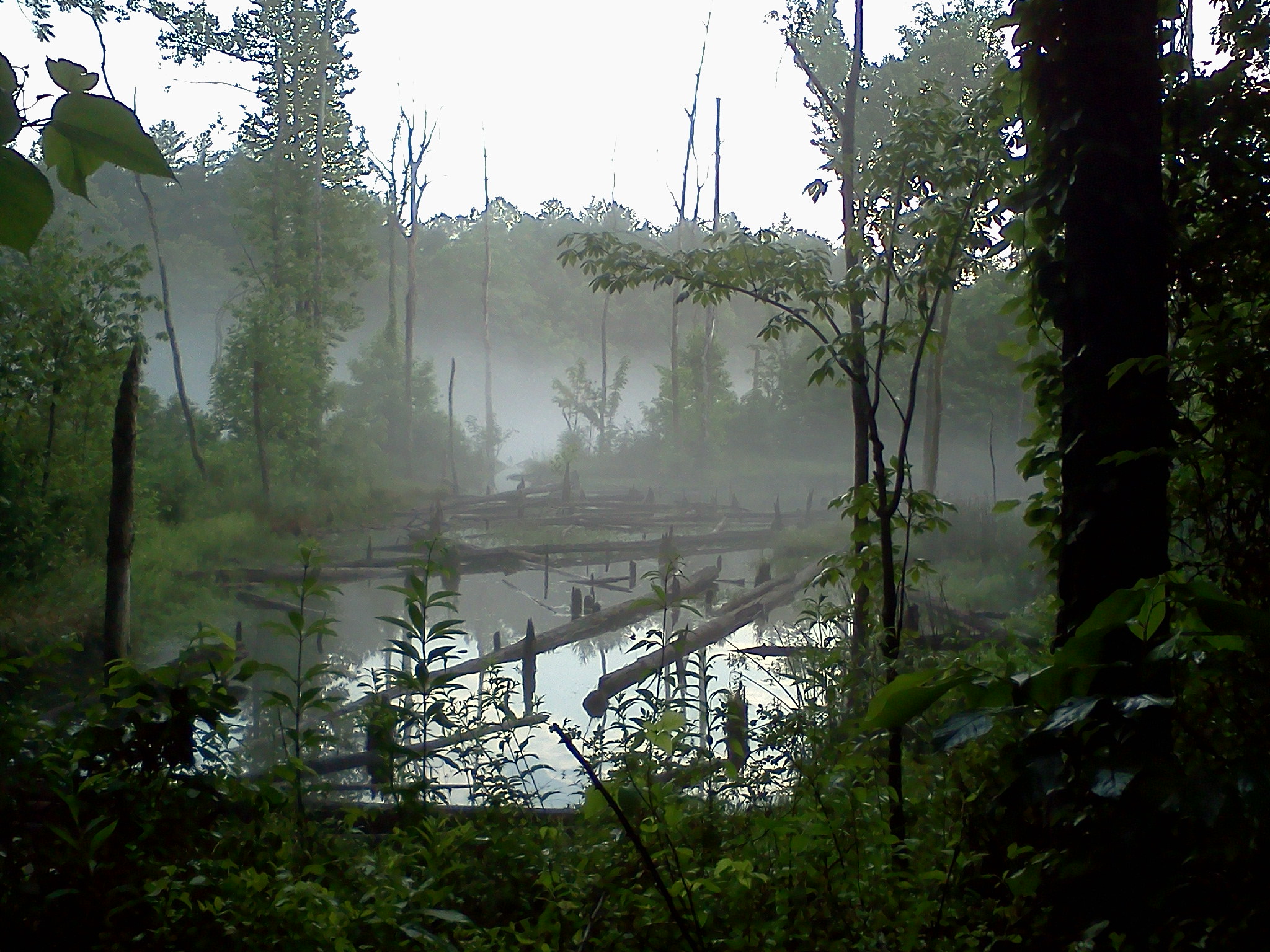-
Posts
4,715 -
Joined
-
Last visited
Content Type
Profiles
Blogs
Forums
American Weather
Media Demo
Store
Gallery
Everything posted by Windspeed
-
Yes, I meant 95L but typed 94L. [emoji849]
-
95L has been designated by TAFB. NHC has coded yellow and a 20% chance of development in 5 days. However, the environment is not necessarily unfavorable for development in the waves current location. It looks healthy, has a defined circulation, good convection and mid level vorticity, albeit still weak. I'd give this a better chance at TCG the next few days. It does not have the greatest model support atm, but the ECMWF ensembles do have it. Edit: 95L, not 94L.
-
You simply want to avoid sinking from height. This is counterintuitive to steeper lapse rates and CAPE needed to sustain convection for significant period of time to support TCG. However, it does not mean you cannot have a TC do well for itself if already developed. We have seen strong canes in an MJO suppressed phase, but typical when the TC had already gone through genesis. Strong upper vorticity helps TCG. But it is kind if meh as being proven to maintain intense hurricanes, which will have already superceded an atmospheric environment and SSTs, upper outflow pattern, wind shear and poleward velocities become of greater importance than MJO phase.
-
Great discussion going on here... My take away, probably going to be plenty of lift across the basin regardless of the +IOD to make things go crazy from Aug. 20th into October.
-
Potential and modeling of all these variables are stacking up for it to really ramp up. I suppose you never know what will occur IRL until it happens, but it certainly looks concerning. Probably one of the biggest flashing exclamation points is the southerly prognosis of deep Caribbean runners with low shear. That has been modeled with consistency for several months. The large scale pattern supports that. Some of those could be big impacts for central America. But certainly having southerly tracking storms at that trajectory puts Florida and the GOM into play with any digging trough through the plains. Going to get interesting fo'sho.
-

2020 East & Central Pacific Hurricane Season
Windspeed replied to jgf's topic in Tropical Headquarters
-
Researchers find link between Atlantic hurricanes and weather system in East Asia https://phys.org/news/2020-08-link-atlantic-hurricanes-weather-east.html
- 46 replies
-
- historical tropical cyclones
- hurricanes
-
(and 3 more)
Tagged with:
-
Somewhat normal. June into early August tends to have SAL outbreaks due to strong sub 700 hPa level easterly wind bursts off of NW African continent. Azores SPHP and intensity of 500 dm heights in the Eastern Atlantic are generally at their strongest. Interestingly there is also correlation to SAL, the West African Monsoonal flow (WAM) and increased numbers of AEWs. In some respects, SAL is just a byproduct between WAM and EATL ridging; and although SAL helps to keep many AEWs in check through the MDR, it doesn't always persist into September and October. Generally by mid-to-late July, the orientation of Azores influenced ridging has shifted into stronger western Atlantic ridging (WAR) pattern, especially with a negative ENSO, and a positive AMO and NAO. Sometimes earlier in late July, sometimes later into late August. An overall suppressed regime of the Atlantic sub tropics to ITCZ should be shifting in the next week or two to one much more favorable for TCGs. I should add that despite the strong SAL outbursts back in July, we still had AEWs go on to develop. Even if Gonzalo eventually succumbed to a hostile environment, Isaias did not. All this pretty much leads to the idea that when atmospheric favoribility does increase through the MDR, it's likely to get very active.
-
The 0z ECMWF ensembles are very temporary with any development out of the new lemon. All tracks of the weak area of low pressure get squashed. However, deeper into the forecast period they do want to develop an AEW that has yet to exit the African continent. This would be in the 7-10 day range coinciding with an increasing favoribility in the MDR and leading into better upper 200 hPa vorticity across the western MDR.
-
We have a new lemon in the MDR, west-southwest of the Verdes. Not the best environment that becomes less conducive in a few days. But who knows... ZCZC MIATWOAT ALL TTAA00 KNHC DDHHMM Tropical Weather Outlook NWS National Hurricane Center Miami FL 800 AM EDT Fri Aug 7 2020 For the North Atlantic...Caribbean Sea and the Gulf of Mexico: 1. A tropical wave is located several hundred miles west-southwest of the Cabo Verde Islands. Slow development of this system is possible during the next couple of days as it moves slowly westward. After that time, environmental conditions are expected to become less conducive for development. * Formation chance through 48 hours...low...10 percent. * Formation chance through 5 days...low...10 percent. Forecaster Beven
-
Uh oh...
-
The fantasy Yucatan system is the same disturbance the GFS has consistently resolved in the 240+ hr range. Again, too far out to take seriously, but at least notable in the OPs consistency to keep an eye on that general monsoonal trough + wave interaction, and favorable upper 200 hPa vorticity for potentially something of interest around the mid-to-late month in the WATL. Interestingly, the fantasy EPAC system could interfere as a powerful hurricane could create less favorable downstream upper flow over Mexico into GOM. At any rate, far enough out that literally nothing might develop IRL in both basins.
-
So far 2020 has been gangbusters. We're low on ACE considering number of named storms due to no majors or long-tracking storms with persistent hurricane intensity, but that is likely to change in a couple of weeks regardless of short-term development. We are still way ahead on ACE as well versus climatological mean.
-
Well if we're going to play the ~300 hr fantasy land game, why hello there upper divergent atmospheric crack on steroids...
-
This is somewhat ominous. Wind shear has been anomalously low. Sure, there has still been shear, hence Isaias' struggles and being kept in check through the Bahamas and east of Florida. Still, wasn't enough to kill it as we have seen in past seasons with early TCs. Climatological shear tends to reach its lowest point throughout the MDR and WATL by September. How anomalous lower shear heading into this period affects TCG and long-trackers remains to be seen, but it's enough to raise an eyebrow.
-
Short but nice article by NOAA about tropical cyclone scientist, Isaac Monroe: Isaac Monroe Cline: The Cyclone Pioneer
- 46 replies
-
- 1
-

-
- historical tropical cyclones
- hurricanes
-
(and 3 more)
Tagged with:
-
Both the GFS and ECMWF, including their ensembles are quiet the next 10 days for TCG across the Atlantic Basin. The Euro op does hint at MDR development next week but we appear to be entering a break in activity. Not necessarily unwarranted. July was a busy month despite no TC getting especially intense. A climatological sharp rise in activity begins around the 19th. Most signals are still strong for a very active CV stretch of the season beginning in a few weeks and likely remaining that way through October. While we still have landfall and ECONUS impacts by Isaias to deal within the next 24 hours, after everything settles, enjoy the break.
-
There's a 580 dm mid level trough / gyre extending west of the Cape Verdes. They do happen from time to time even in the EATL. But otherwise, the Azores heights have been doing their thing this year in typical fashion. Hence already having several MDR runners and strong 700 hPa wind bursts. In the first image, note the mid level trough. Also note 850 hPa vorticity field associated with TD10 riding northward and around. Regardless if TD10 gets named, it is doomed due to future encounter with marginal SSTs, but more importantly, the stable airmass about to blast off NW Africa due to, well, the Azores heights rebuilding and doing their thing again in a few days, i.e., nothing out of wack pattern-wise for any prolonged duration. Just a short-lived mid level PV trough about to get filled. See second image:
-
What, nobody's going to create a TD10 thread?!.. /s [emoji854]




